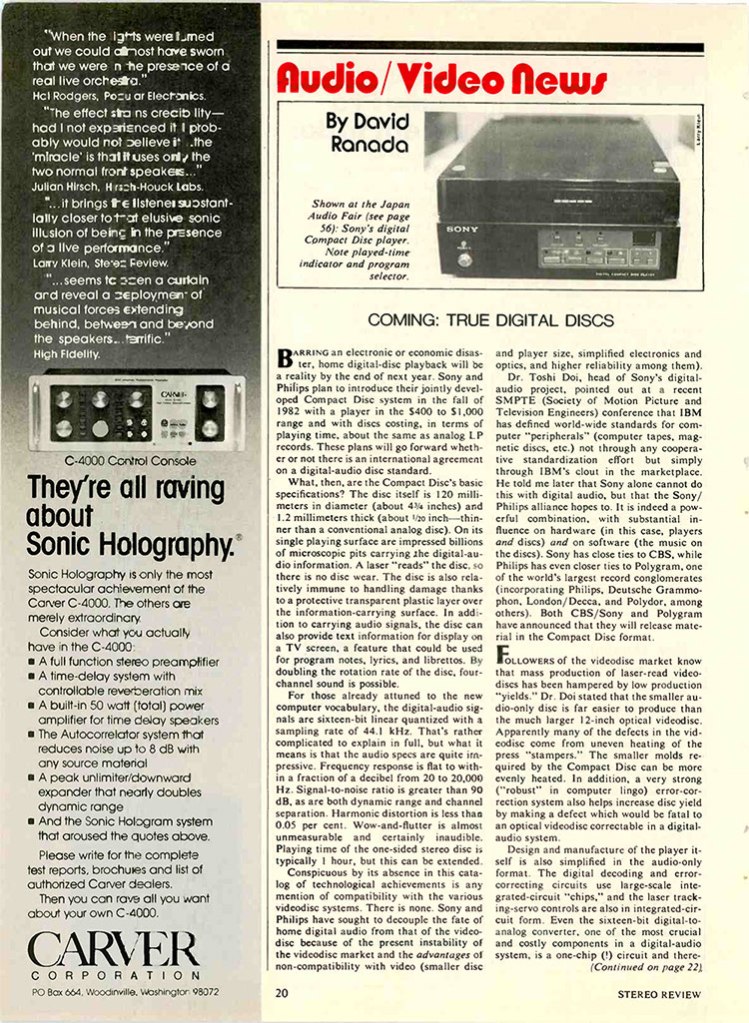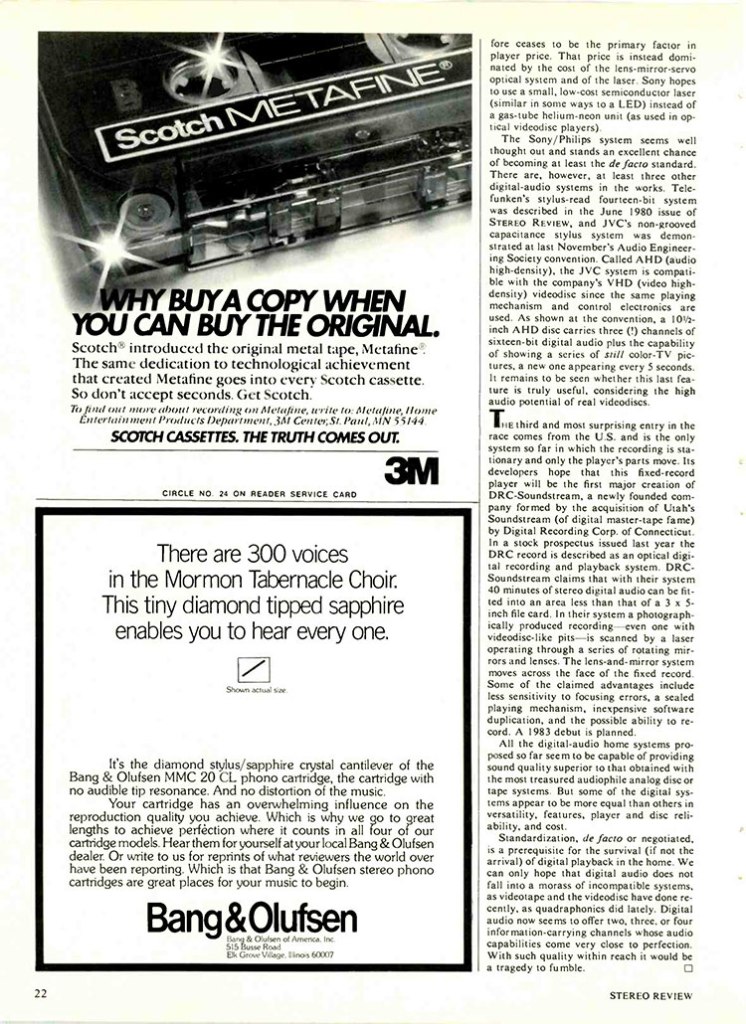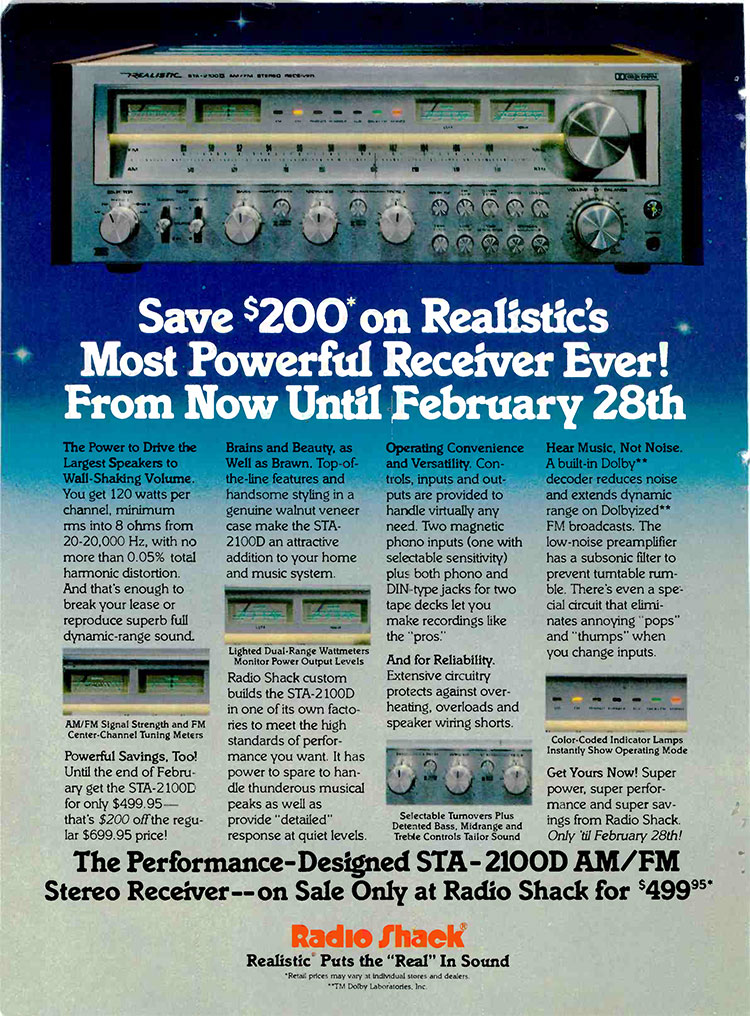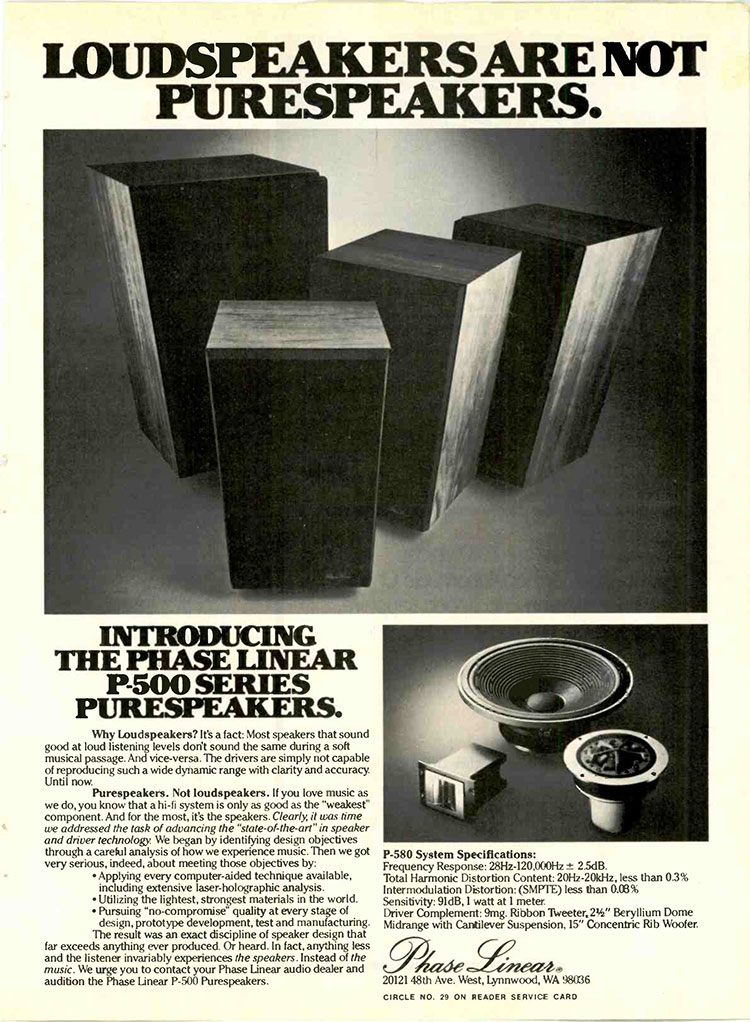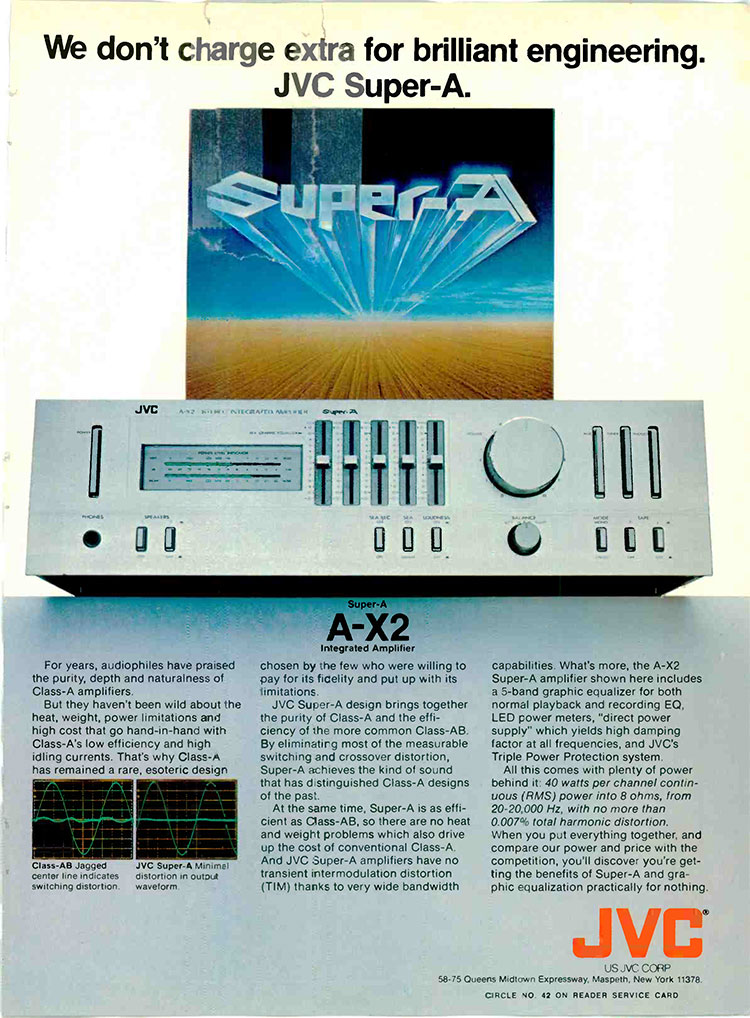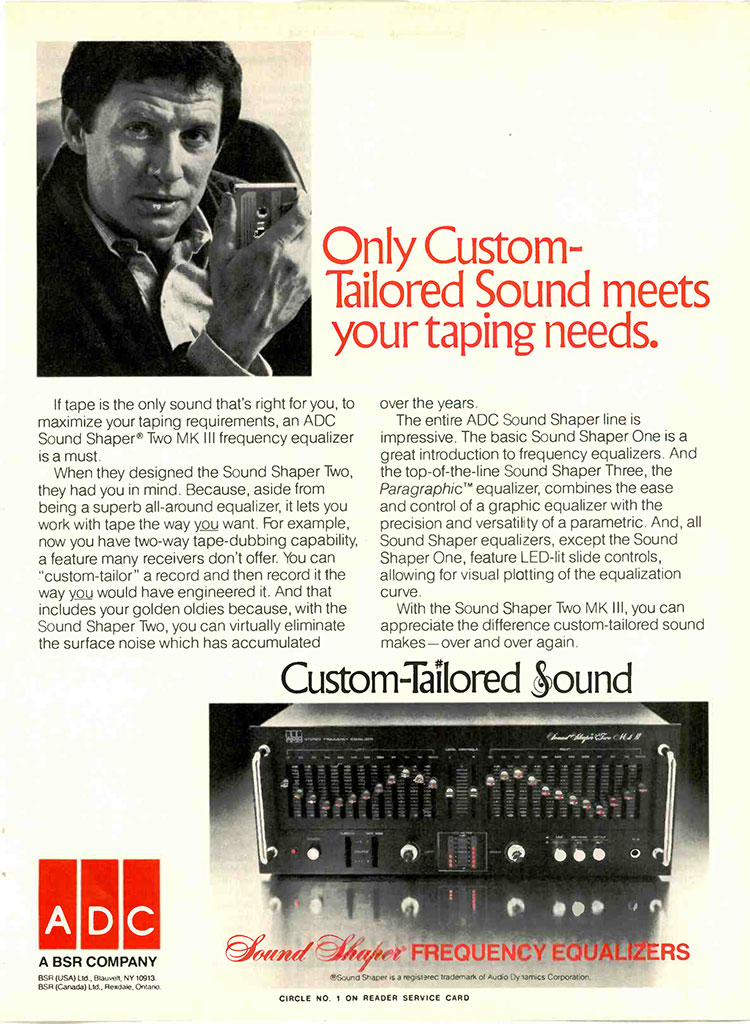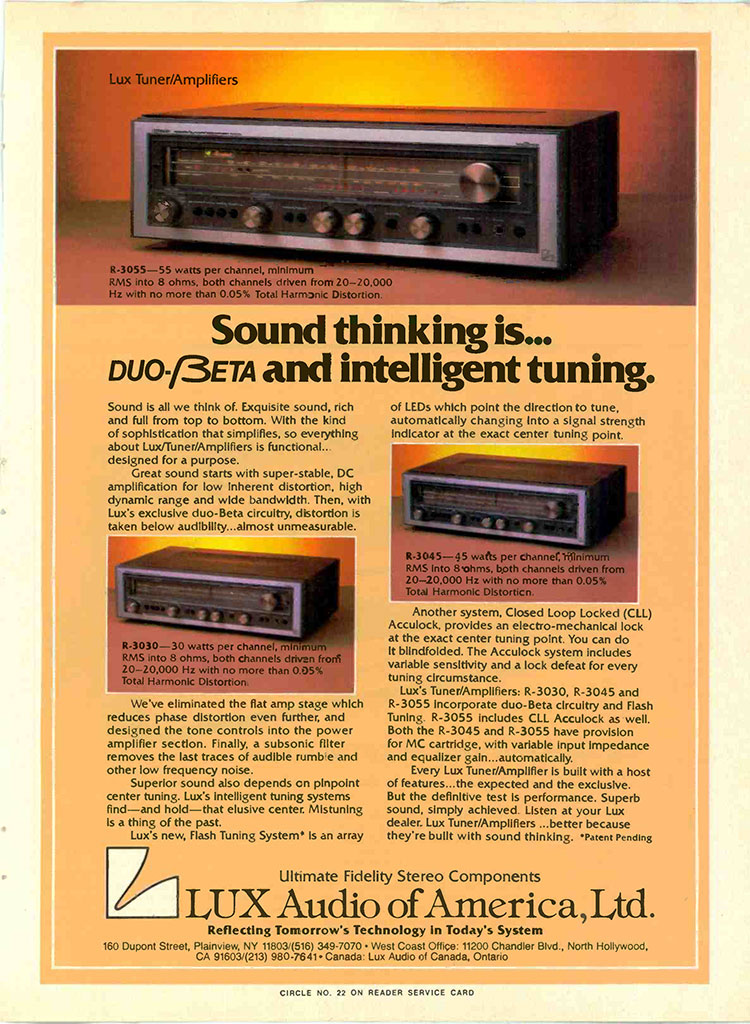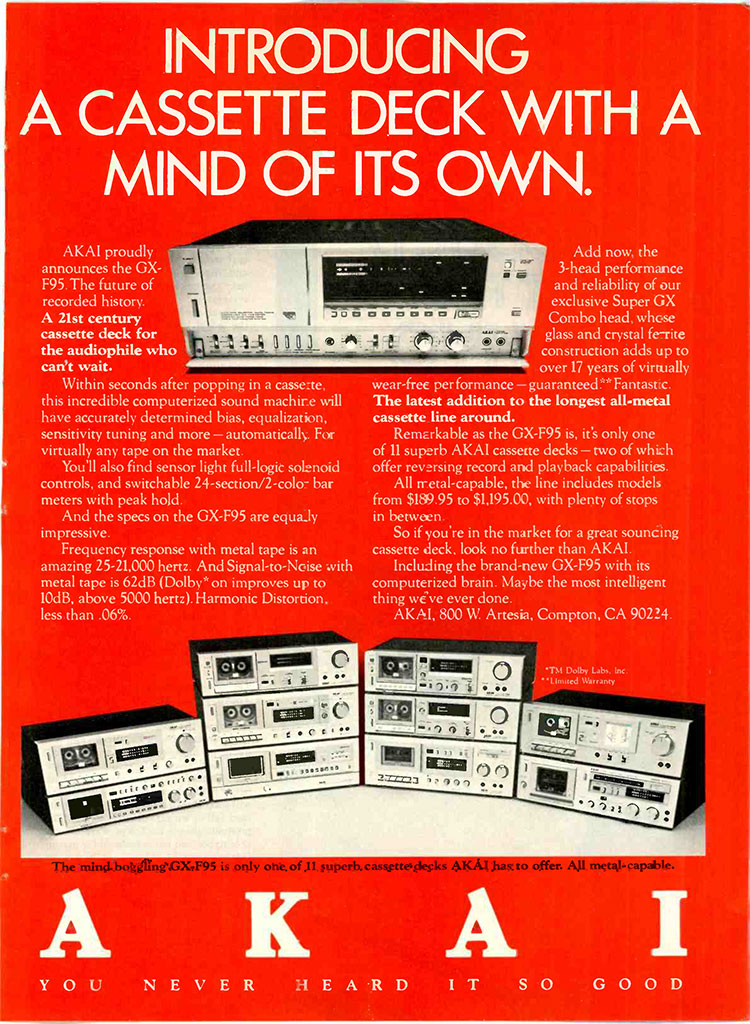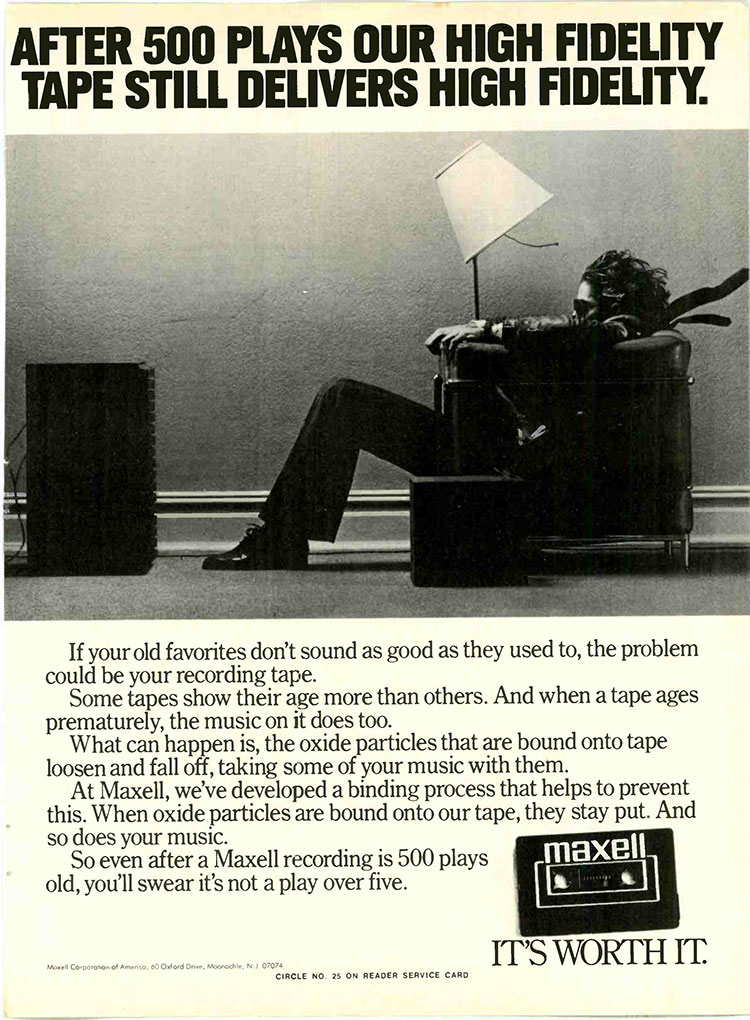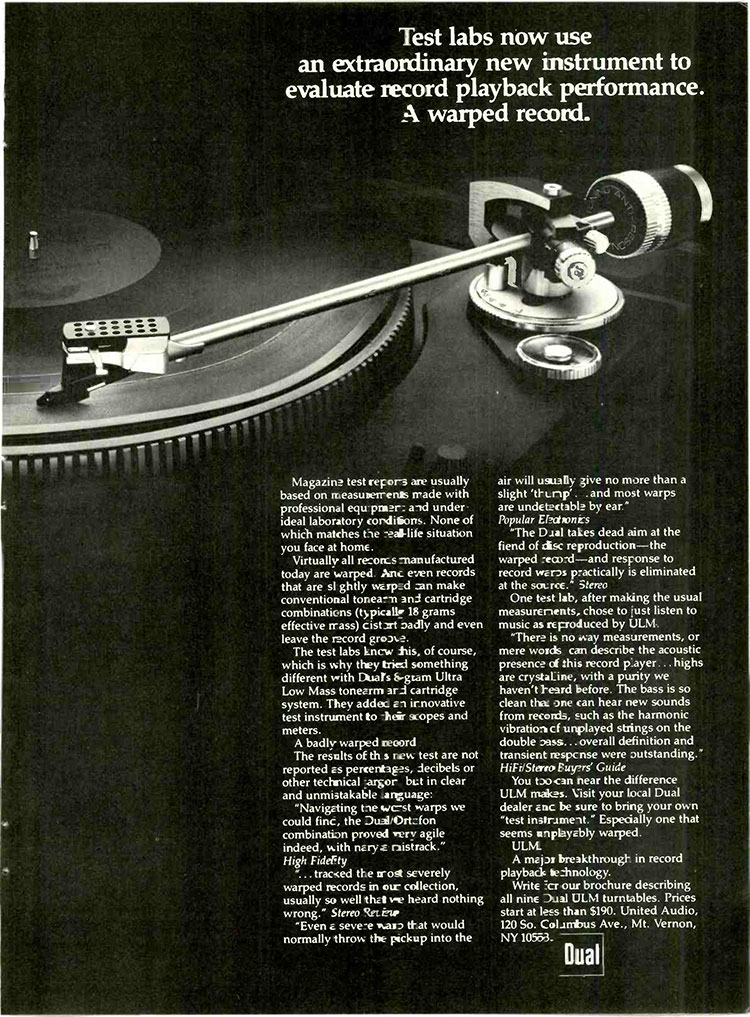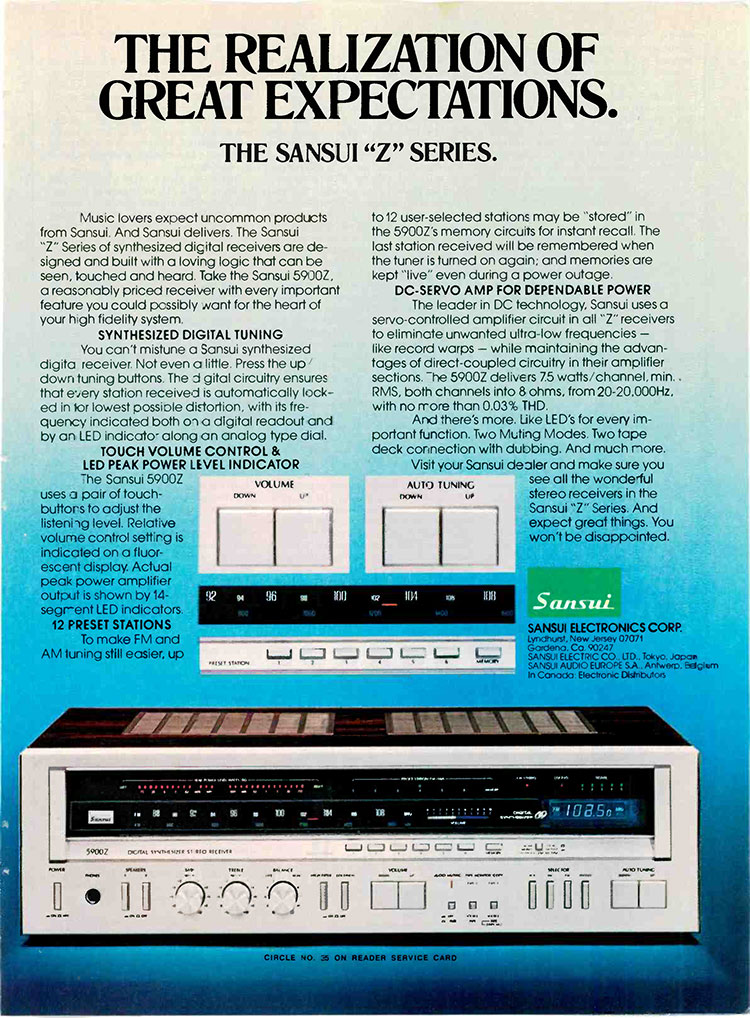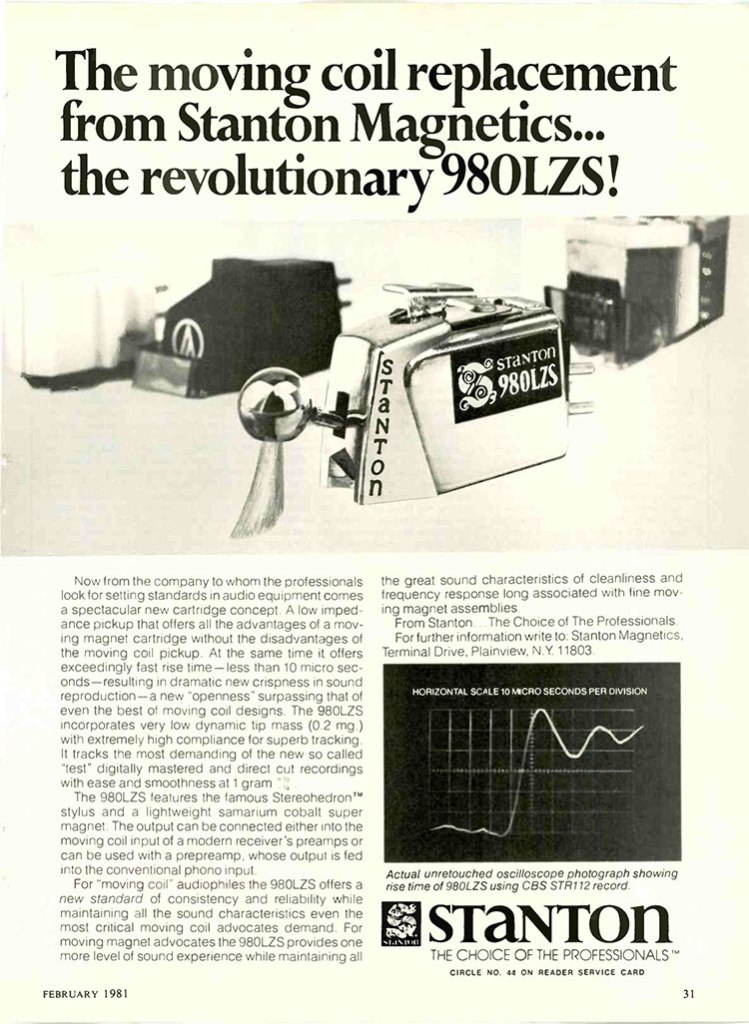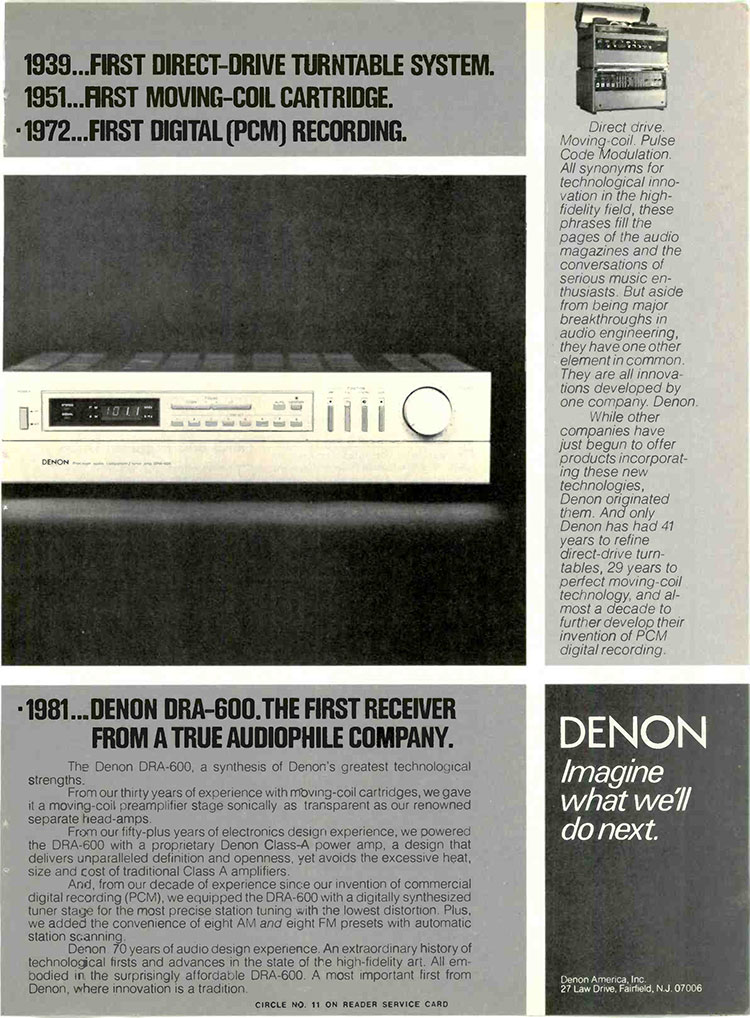Forty years ago this month, the hi-fi industry stood at the edge of the digital precipice. The arrival of the Sony CDP-101, the first consumer compact disc player, was just a year away. But in February 1981, there was still much to be settled. What format would become the dominant means of digital music conveyance in the home? And whose version of that format would win out in the end?
This February 1981 issue of Stereo Review had a special focus on the coming digital revolution. First, there was a David Ranada article in the Audio/Video News section detailing the impending arrival of the CD player, a prototype of which Sony had just showcased at the October 1980 Japan Audio Fair. In it, he detailed some of the specs of what was already emerging as the leading candidate for introducing digital to the home market, as well as some of its competitors.
That’s a tough read. We’ll transcribe it for you below, as well as give you some vintage ads from that month’s issue to gaze upon, because man, there sure were a lot of advertisements in an issue of Stereo Review.
BARRING an electronic or economic disaster, home digital-disc playback will be a reality by the end of next year. Sony and Philips plan to introduce their jointly developed Compact Disc system in the fall of 1982 with a player in the $400 to $1,000 range and with discs costing, in terms of playing time, about the same as analog LP records. These plans will go forward whether or not there is an international agreement on a digital-audio disc standard.
What, then, are the Compact Disc’s basic specifications? The disc itself is 120 millimeters in diameter (about 43/4 inches) and 1.2 millimeters thick (about 1/20 inch-thinner than a conventional analog disc). On its single playing surface are impressed billions of microscopic pits carrying the digital-audio information. A laser “reads” the disc, so there is no disc wear. The disc is also relatively immune to handling damage thanks to a protective transparent plastic layer over the information-carrying surface. In addition to carrying audio signals, the disc can also provide text information for display on a TV screen, a feature that could be used for program notes, lyrics, and librettos. By doubling the rotation rate of the disc, four-channel sound is possible.
For those already attuned to the new computer vocabulary, the digital-audio signals are sixteen-bit linear quantized with a sampling rate of 44.1 kHz. That’s rather complicated to explain in full, but what it means is that the audio specs are quite impressive. Frequency response is flat to within a fraction of a decibel from 20 to 20,000 Hz. Signal-to-noise ratio is greater than 90 dB, as are both dynamic range and channel separation. Harmonic distortion is less than 0.05 per cent. Wow-and-flutter is almost unmeasurable and certainly inaudible. Playing time of the one-sided stereo disc is typically I hour, but this can be extended.
Conspicuous by its absence in this catalog of technological achievements is any mention of compatibility with the various videodisc systems. There is none. Sony and Philips have sought to decouple the fate of home digital audio from that of the videodisc because of the present instability of the videodisc market and the advantages of non-compatibility with video (smaller disc and player size, simplified electronics and optics, and higher reliability among them).
Dr. Toshi Doi, head of Sony’s digital-audio project, pointed out at a recent SMPTE (Society of Motion Picture and Television Engineers) conference that IBM has defined world-wide standards for computer “peripherals” (computer tapes, magnetic discs, etc.) not through any cooperative standardization effort but simply through IBM’s clout in the marketplace. He told me later that Sony alone cannot do this with digital audio, but that the Sony/Philips alliance hopes to. It is indeed a powerful combination, with substantial influence on hardware (in this case, players and discs) and on software (the music on the discs). Sony has close ties to CBS, while Philips has even closer ties to Polygram, one of the world’s largest record conglomerates (incorporating Philips, Deutsche Grammophon, London/Decca, and Polydor, among others). Both CBS/Sony and Polygram have announced that they will release material in the Compact Disc format.
FOLLOWERS of the videodisc market know that mass production of laser-read videodiscs has been hampered by low production “yields.” Dr. Doi stated that the smaller audio-only disc is far easier to produce than the much larger I2-inch optical videodisc. Apparently many of the defects in the videodisc come from uneven heating of the press “stampers.” The smaller molds required by the Compact Disc can be more evenly heated. In addition, a very strong (“robust” in computer lingo) error-correction system also helps increase disc yield by making a defect which would be fatal to an optical videodisc correctable in a digital-audio system.
Design and manufacture of the player itself is also simplified in the audio-only format. The digital decoding and error-correcting circuits use large-scale integrated-circuit “chips,” and the laser tracking-servo controls are also in integrated-circuit form. Even the sixteen-bit digital-to-analog converter, one of the most crucial and costly components in a digital-audiosystem, is a one-chip (!) circuit and therefore ceases to be the primary factor in player price. That price is instead dominated by the cost of the lens-mirror-servo optical system and of the laser. Sony hopes to use a small, low-cost semiconductor laser (similar in some ways to a LED) instead of a gas-tube helium-neon unit (as used in optical videodisc players).
The Sony/Philips system seems well thought out and stands an excellent chance of becoming at least the de facto standard. There are, however, at least three other digital-audio systems in the works. Telefunken’s stylus-read fourteen-bit system was described in the June 1980 issue of STEREO REVIEW, and JVC’s non-grooved capacitance stylus system was demonstrated at last November’s Audio Engineering Society convention. Called AHD (audio high-density), the JVC system is compatible with the company’s VHD (video high-density) videodisc since the same playing mechanism and control electronics are used. As shown at the convention, a 10 1/2-inch AHD disc carries three (!) channels of sixteen-bit digital audio plus the capability of showing a series of still color-TV pictures, a new one appearing every 5 seconds. It remains to be seen whether this last feature is truly useful, considering the high audio potential of real videodiscs.
THE third and most surprising entry in the race comes from the U.S. and is the only system so far in which the recording is stationary and only the player’s parts move. Its developers hope that this fixed-record player will be the first major creation of DRC-Soundstream, a newly founded company formed by the acquisition of Utah’s Soundstream (of digital master-tape fame) by Digital Recording Corp. of Connecticut. In a stock prospectus issued last year the DRC record is described as an optical digital recording and playback system. DRC-Soundstream claims that with their system 40 minutes of stereo digital audio can be fitted into an area less than that of a 3 x 5-inch file card. In their system a photographically produced recording—even one with videodisc-like pits—is scanned by a laser operating through a series of rotating mirrors and lenses. The lens-and-mirror system moves across the face of the fixed record. Some of the claimed advantages include less sensitivity to focusing errors, a sealed playing mechanism, inexpensive software duplication, and the possible ability to record. A 1983 debut is planned.
All the digital-audio home systems proposed so far seem to be capable of providing sound quality superior to that obtained with the most treasured audiophile analog disc or tape systems. But some of the digital systems appear to be more equal than others in versatility, features, player and disc reliability, and cost.
Standardization, de facto or negotiated, is a prerequisite for the survival (if not the arrival) of digital playback in the home. We can only hope that digital audio does not fall into a morass of incompatible systems, as videotape and the videodisc have done recently, as quadraphonics did lately. Digital audio now seems to offer two, three, or four information-carrying channels whose audio capabilities come very close to perfection. With such quality within reach it would be a tragedy to fumble.
Of course, forty years removed from those “holy grail” expectations, it’s easy to chuckle when folks still debate analog vs. digital today, not to mention the improvements on the original CD format that were to follow like SACD and DVD-A. Also notable are the other formats noted within that piece. The JVC system—a variation of their VHD system, which was very similar to RCA’s SelectaVision—and Telefunken’s 14-bit entry never got past the prototype stage.
The saddest story, though, was that of Soundstream, which was just a couple years removed from its significant audiophile triumphs in producing classical recordings that are still renowned today. The acquisition by DRC saw the company’s energies diverted toward the race for the home digital market, to no avail. In 1985, the United States’ first audiophile digital audio recording company closed shop, just 10 years after its founding.
The February 1981 Stereo Review also featured a report from the aforementioned Japan Audio Fair detailing the appearance of the Sony CD player prototype, as well as those from numerous other manufacturers, some utilizing the same Phillips/Sony standard while others deviating from it. On the digital front, they said …
The prospect for digital standardization was given a big boost last summer when Sony abandoned its own digital-disc system and joined forces with Philips to refine and promote the Compact Disc as the standard system. At the Fair both Sony and Philips were demonstrating their CD players to attentive crowds with a variety of classical, pop, and jazz recordings already produced in digital form. The CD digital records are only about 4 3/4 inches in diameter and are played by a little solid-state optical laser, so they are virtually immune to such common record-playing problems as dust, wear, and acoustic feedback.
If the CD player does come to be adopted as the universal standard format for digital records, other Japanese manufacturers will be ready: Pioneer, Toshiba, Hitachi, and Sharp showed prototypes or working versions of their laser-read digital-disc players, some of which did not follow the Compact Disc format. When will you be able to buy one—and the digital records to go with it? Current guessing is that by mid-1982 either the CD system will have been adopted by international agreement as the standard or, if not, enough manufacturers will have agreed to market CD players that it will become the standard de facto. Enough record manufacturers will then agree to manufacture CD records so as to make purchase of the players worthwhile. (Even then, it will of course take quite a while to produce a large enough variety of digital records to compete seriously with the available array of analog discs; it is unlikely that your present turntable will be technologically unemployed until very late in the decade.)
Of course it is still possible that the CD system won’t become the principal standard for digital audio discs, since proponents of other systems remain convinced of their own machines’ virtues. For instance, any of the three (shortly to be) available kinds of videodisc players can be used to play fullsize (12-inch) digital-audio discs simply by adding an outboard adaptor to decode the signals. Pioneer has successfully demonstrated its optical-disc video player with a Model 2014 digital decoding adaptor, with impressive-sounding results, and Toshiba and Mitsubishi had similar systems on display at the Tokyo Fair. Toshiba also showed a hybrid: a 12-inch optical-disc player with built-in PCM decoding circuits instead of video circuits; they also suggested adoption of the 12-inch optical disc as the Type I digital standard and the 4 3/4-inch Compact Disc as the Type II digital standard format. Meanwhile, JVC and Matsushita are marketing a non-optical videodisc system called VHD (Video High Density) and a digital-audio version of the same player called AHD; Yamaha’s exhibit included a large AHD digital-audio disc display. The standards battle is far from over.
Finally, there was “Digital Audio: A Primer,” a cute relic of the day where, over three pages, the process of converting music into 0s and 1s and then back into music, and the technology needed to do so, is explained. It’s included here as a downloadable PDF for anyone who might want to take a gander at how the public was being prepped for the oncoming digital wave. Enjoy!


